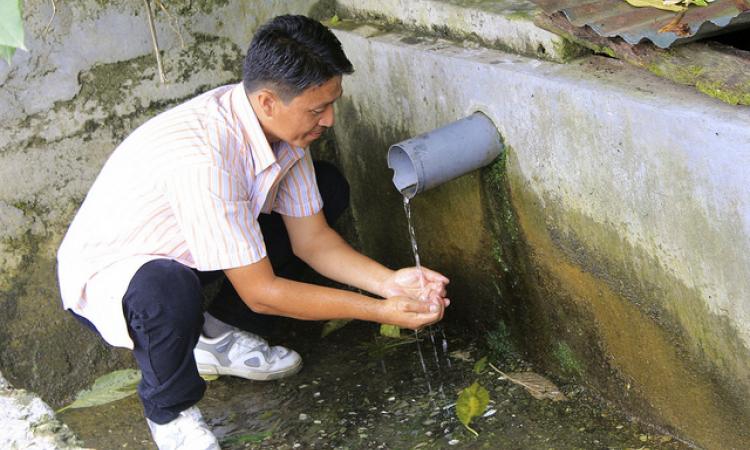
Nearly 30 percent of springs in the Himalayas are drying up: Niti Ayog
According to the report prepared by five working groups set up by Niti Aayog, nearly 30 percent of springs in the Himalayas are drying up while 50 percent have reported reduced discharge. The working groups were appointed last year by Niti Aayog to recognise the uniqueness of the Himalayas and the challenges of sustainable development. The report has recommended several call for actions which includes spring mapping and revival in the entire Himalayan region in a phased manner, applying carrying capacity concept to all major tourist destinations and setting up of a Himalayan authority for coordinated and holistic development in the region.
Telangana's groundwater resources under threat
According to a recent report titled Dynamic groundwater resources of Telangana state for 2016-17, out of the 12,361 MCM of groundwater in the state, nearly 65 percent has got extracted in 2016-17. A similar report released earlier in 2012-13 for the erstwhile Andhra Pradesh revealed an extraction of 58 percent of groundwater for the 10 districts of Telangana. The report has also mentioned that there are around 14 lakh borewells in the state which include both registered and non-registered borewells under the Water, Land and Trees Act (WALTA).
Cauvery delta: Tail-end areas not receiving water
Farmers' groups and activists have slammed the Tamil Nadu government for not providing enough water in the tail-end areas of the Cauvery delta—Karur, Mannargudi, Tiruvarur, Cuddalore and Nagapattinam—for irrigation purposes despite a release of 1,70,000 cusecs of water from the Mettur dam. They claim that the lack of water in the tail-end areas is due to sand mining, lack of desiltation and mismanagement of water. However, the public works department (PWD) has refuted the allegations saying that the delay is due to the hilly terrain.
Noida’s groundwater level depletes by 1.5 metres every year: CGWB
The recent data from the Central Groundwater Board (CGWB) reveals that the groundwater levels in Noida and Greater Noida have been falling at an average rate of 1.5 metres every year for the past five years. As per the CGWB, the average water table dropped to 24.13 metres in 2017 from 18.22 metres in 2013 in Noida while in Greater Noida, it fell to 11.11 metres last year from 7.95 metres five years back. The depletion is being attributed to the over-extraction of groundwater primarily for construction purposes.
Maharashtra highly vulnerable to floods: Report
According to Dr Sudhir Bhongle, an expert on water and flood management, a total of 3,264 dams in Maharashtra have made it highly vulnerable to Kerala-like devastating floods. Also, cities like Mumbai, Thane and Nanded are at risk due to the unchecked urbanisation and inept flood control measures. Referring to the 2005 Mumbai floods, he added that incessant rains were considered the primary cause of the floods, however, the underlying factors included poor coordination with the meteorology department, choked drains, lack of open spaces, unchecked growth in the flood control line, high tide and the opening of dam gates.
This is a roundup of important news published between August 22 - 28, 2018. Also, read policy matters this week.
/articles/himalayan-springs-drying-niti-ayog